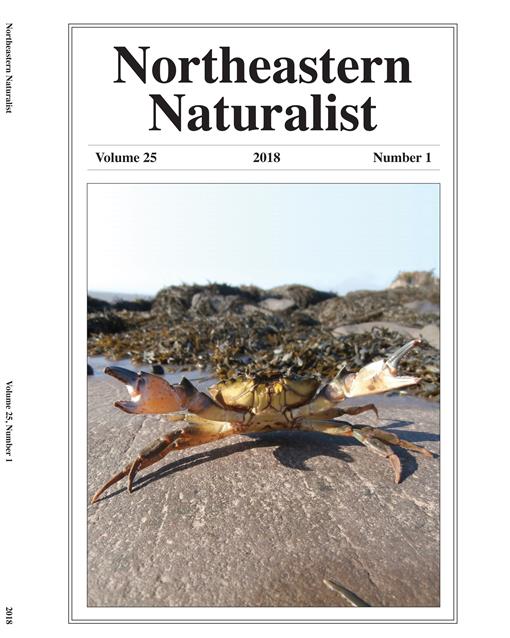Saltmarshes are highly productive ecosystems that provide nursery and refuge habitat for animals, buffer storm-wave effects, and stabilize coastlines. Unfortunately, saltmarshes are in decline due to several cumulative stressors. Beneficial root-associated fungi are known to colonize >80% of land plants, but are understudied in intertidal zones. We examined arbuscular mycorrhizal fungi (AMF) in the roots of 2 dominant saltmarsh cordgrasses, Spartina patens (Saltmarsh Hay) and Spartina alterniflora (Smooth Cordgrass) (Poaceae), in the Minas Basin, NS, Canada. We collected 9 sediment cores at the beginning, middle, and end of the 2016 growing season (May–September) for each plant species (n = 54). We examined AMF root colonization using microscopy and fungal-DNA barcoding. Smooth Cordgrass had an AMF root colonization rate of 9%, while Saltmarsh Hay exhibited a higher AMF root colonization rate of 68%. We identified 1 AMF species, Funneliformis geosporum (Glomeraceae), in both host-plant species. We present the first Spartina spp. (cordgrasses) AMF root-colonization data for northeastern North America north of Connecticut, which may aid saltmarsh restoration efforts in Nova Scotia.
How to translate text using browser tools
1 March 2018
Examining Arbuscular Mycorrhizal Fungi in Saltmarsh Hay (Spartina patens) and Smooth Cordgrass (Spartina alterniflora) in the Minas Basin, Nova Scotia
Tyler W. d'Entremont,
Juan C. López-Gutiérrez,
Allison K. Walker
ACCESS THE FULL ARTICLE

Northeastern Naturalist
Vol. 25 • No. 1
March 2018
Vol. 25 • No. 1
March 2018




